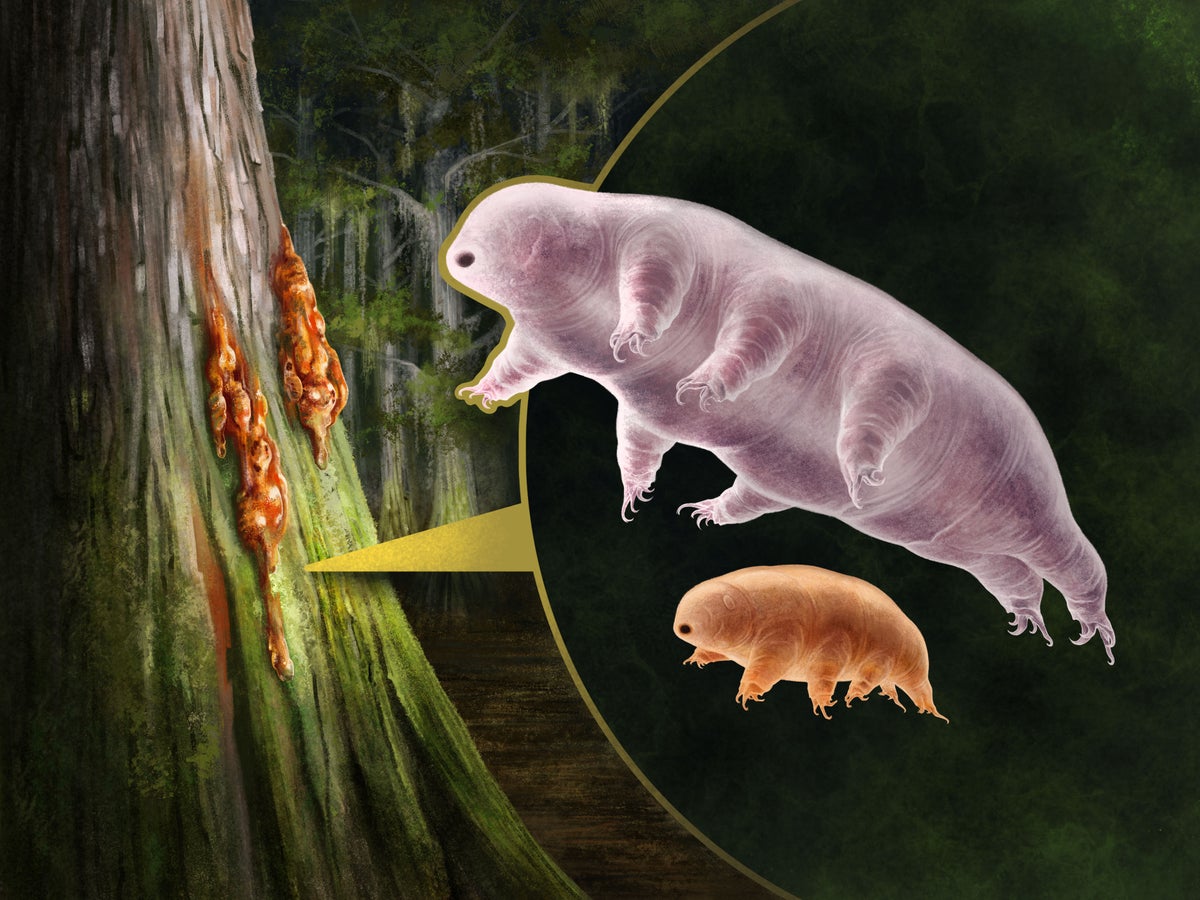252 million years ago, tardigrades may have escaped extinction using this one weird trick
Microscopic tardigrades—plump, eight-legged arthropod relatives—are nearly indestructible, and that superpower may have helped them weather the deadliest mass extinction in Earth’s history, according to a new analysis of tardigrade fossils in amber. The study is the first to estimate when this ability evolved.
Tardigrades, also called water bears, can withstand extreme heat, cold, pressure and radiation. They survive hostile environments through a process called cryptobiosis, in which they expel most of the water in their body and enter a suspended metabolic state. Two major tardigrade lines possess this ability.
There are only four known tardigrade fossils. All are preserved in amber, including two inside an amber pebble that was found in Canada in the 1940s and dates from 84 million to 71 million years ago. One of the pebble’s tardigrades, representing a species named Beorn leggi, was described in 1963. The other was too small to be identified at the time


